10 Employee Engagement Metrics: Key Indicators to Measure Workforce Involvement

Understanding and improving employee engagement is pivotal for organizations seeking to enhance productivity and retain talent. Employee engagement metrics serve as critical tools for gauging the level of commitment and enthusiasm employees have toward their work and the company.
These metrics are not just indicators of employee satisfaction. They also reflect the health of the organization as a whole, influencing everything from performance levels to staff retention.
By systematically tracking these key indicators, leaders can make informed decisions to foster a more vibrant and productive work environment.
The journey towards a fully engaged workforce involves knowing what to measure and how to interpret the data. Metrics like Employee Net Promoter Score (eNPS) and retention rates provide tangible figures, while qualitative measures offer nuanced insights into the employee experience.
The challenge lies in selecting metrics that align with organizational goals and deploying them in a way that is both ethical and effective. The resulting insights not only illuminate areas for improvement but can also guide strategies aimed at bolstering employee morale and loyalty.
Key Takeaways
- Engagement metrics are essential for evaluating workforce commitment and company health.
- Quantitative and qualitative data together offer a comprehensive view of employee engagement.
- Effective use of metrics guides strategic decisions to enhance employee satisfaction and productivity.
Definitions and importance of employee engagement metrics
Employee engagement metrics are quantitative and qualitative measurements used to assess your organization's workplace environment and culture. These metrics serve as a critical barometer for gauging how involved, enthusiastic, and committed employees are toward their work and the company at large.
Key metrics include:
- Employee Net Promoter Score (eNPS): reflects employee likelihood to recommend your workplace.
- Retention rate: indicates your success in maintaining employee relationships over time.
- Professional development opportunities: measures how employees perceive growth within your company.
Beyond merely reflecting individual employee satisfaction, these metrics encapsulate the overall health of an organization, influencing a wide array of outcomes from performance levels to staff retention rates.
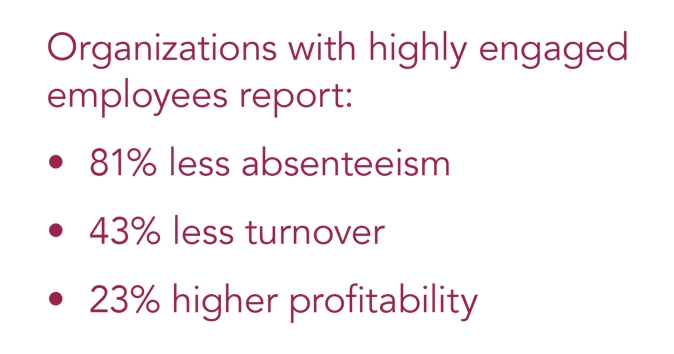
The importance of diligently tracking these key indicators cannot be overstated. Our research, conducted in collaboration with Gallup, reveals a stark reality: actively disengaged employees cost the U.S. economy a staggering $483-$605 billion annually in lost productivity.
This figure highlights the profound impact that disengagement can have, not just on workplace morale but also on the bottom line.
Actively disengaged employees, characterized by their misery in the workplace, not only negatively influence their coworkers but also contribute to higher absenteeism rates, diminished work output, and even the loss of customers.
Better employee engagement has the power to:
- Enhance employee morale and motivation
- Improve the bottom line
- Increase retention, reducing the cost of turnover
- Help identify leadership effectiveness and team dynamics
- Guide strategies for professional development and training programs
By systematically monitoring employee engagement metrics, leaders are equipped to make informed decisions that can significantly mitigate these costs. Through a combination of quantitative figures, such as the eNPS scores and retention rates, alongside qualitative measures, organizations can gain a comprehensive view of employee engagement.
This dual approach allows for the identification of areas needing improvement and the formulation of strategies aimed at enhancing employee morale, loyalty, and overall productivity.
In essence, employee engagement metrics are not just tools for evaluation but are essential for fostering a vibrant, productive work environment. They enable organizations to pinpoint where interventions are needed, guiding efforts to cultivate a more engaged and committed workforce.
The stark financial implications of disengagement underscore the urgency and necessity of this endeavor, making the pursuit of high employee engagement an imperative for organizational success.
10 key employee engagement metrics to measure
To effectively assess and enhance your workforce's engagement, tracking specific metrics is crucial. These indicators will provide you with valuable insights into your employees' commitment and satisfaction levels.
1. Employee Net Promoter Score (eNPS)
Employee Net Promoter Score, or eNPS for short, is a way of measuring how happy and loyal employees are to a company. It's based on a similar idea used to check if customers are loyal, called the Net Promoter Score (NPS).
In eNPS, employees are asked to rate how likely they are to recommend their workplace to others, using a scale from zero to ten. An example question would be, "On a scale of 1 to 10, how likely are you to recommend our company as a great place to work?"
Employees' answers put them in one of three categories:
1. Promoters (scores of 9-10): These are the super happy employees who would probably tell others that their company is a great place to work.
2. Passives (scores of 7-8): These employees are okay with their jobs but aren't super excited. They're not likely to say anything really good or bad about their workplace.
3. Detractors (scores of 0-6): These employees are not happy and might even say bad things about their company.
How it's calculated: to determine the eNPS score, you take the percentage of detractors away from the percentage of promoters. The score can be as low as -100 (if everyone is unhappy) or as high as +100 (if everyone loves their job). A positive eNPS means there are more happy employees than unhappy ones, showing that overall, people like working there.
eNPS = (% of promoters) − (% of detractors)
eNPS is a handy way to see how engaged employees are. It's linked to things like how well the company does, how long employees stay, and how much work they get done.
It's an easy and quick way to get a sense of how employees feel, and you can keep checking it to see how changes in the company affect them. But it's important to remember that eNPS is just one part of understanding how employees feel at work.
2. Employee Satisfaction Index (ESI)
The Employee Satisfaction Index (ESI) is a tool used to measure the extent to which employees are satisfied with their job. It is typically represented as a number between 1 and 100, which is calculated based on responses to a survey.
The ESI survey generally consists of three fundamental questions:
- How satisfied are you with your current workplace?
- How well does your workplace meet your expectations?
- How close is your workplace to your ideal job?
Employees usually respond to each of these questions on a scale of 1 to 10, where 1 represents the lowest level of satisfaction and 10 represents the highest. The ESI is then calculated by taking the mean value of the responses to these three questions, dividing it by three, and then multiplying it by 100.
The ESI is often used in conjunction with other metrics and questions in more comprehensive employee surveys to gain a more holistic understanding of employee satisfaction.
This allows organizations to compare scores from different time periods, make more informed decisions, and set more effective goals to attract and retain top talent.
It is recommended to conduct ESI surveys at least twice a year to track changes and trends in employee satisfaction over time. The insights gained from these surveys can help organizations make strategic decisions and long-term changes that benefit both the employees and the organization.
3. Employee retention rate
Employee retention rate is a reflection of how well your organization keeps its employees over a period of time. To calculate it, divide the number of employees who have remained for the entire period by the total number of employees at the start of that period and then multiply by 100 to obtain the percentage.
The employee retention rate is a metric that measures the percentage of employees who remain employed over a specific period. This measurement allows organizations to assess the effectiveness of their human resource practices, including talent development and engagement initiatives.
The retention rate is calculated by dividing the number of employees who stayed on staff from the beginning of a specific time period by the total number of employees at the start of that period and then multiplying the result by 100 to get a percentage.
For example, if a company had 150 employees at the beginning of the year and 125 employees at the end of the year, the retention rate would be (125/150) x 100 = 83%.
A high employee retention rate indicates that an organization is effectively managing the needs of its employees, which can lead to increased productivity and reduced company costs.
The average employee retention rate in the United States is about 90%, but this can vary depending on the industry. For instance, industries such as retail or entertainment often have higher levels of employee turnover.
It's important to note that the employee retention rate is not the inverse of the employee turnover rate. While retention rate measures the percentage of employees who stay, turnover rate measures the percentage of employees who leave.
Both metrics provide a more complete view of employee transition and are crucial for assessing the overall health of an organization's workforce. In fact, our research found that nearly half (47%) of HR professionals cited employee retention/turnover as their top workforce management challenge.
4. Voluntary employee turnover rate
Contrastingly, the voluntary employee turnover rate focuses on the percentage of employees who choose to leave your organization. This departure could be due to a variety of reasons, such as job dissatisfaction, seeking a career change, relocation, family responsibilities, health issues, lack of flexible working hours, poor work-life balance, or retirement.
It's calculated by dividing the number of voluntary departures by the average number of employees during a time period and then multiplying by 100 to express it as a percentage. A high turnover rate might indicate underlying issues in employee satisfaction or engagement.
Here is the formula:
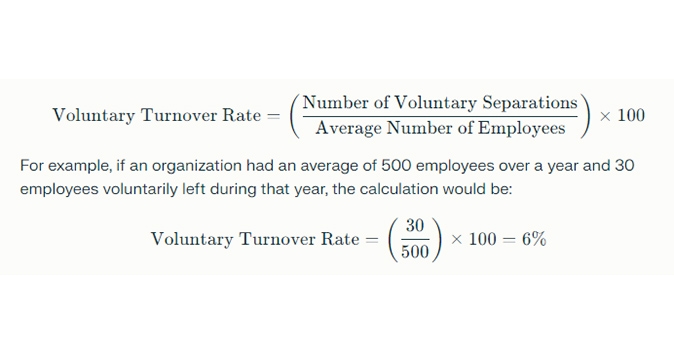
Voluntary turnover is contrasted with involuntary turnover, which refers to the termination of employment by the employer, often due to reasons such as poor performance, undesirable behavior, or redundancy.
While voluntary turnover can create opportunities for fresh talent and new ideas, it is often a costly exercise for organizations due to the expenses associated with recruitment, training, and potential disruption to operations. Therefore, understanding and managing the voluntary turnover rate is a crucial task for HR professionals and team leaders.
5. Employee absenteeism rates
The absenteeism rate is a key metric that tracks how often and for how long employees are absent from work. It serves as an important indicator of an organization's health and the well-being of its employees. The calculation and implications of this rate are as follows:
- Calculation: the absenteeism rate is found by dividing the total number of days employees are absent by the total number of available workdays in a given period, then multiplying by 100 to get a percentage.
- Healthy rate: a generally healthy absenteeism rate is around 1.5%, although this can vary based on industry and location. For context, the U.S. national average was reported at 3.6%.
- Significance: high absenteeism rates, especially those exceeding the national average, can indicate underlying issues in an organization such as poor employee engagement, inadequate leadership, or workplace stress.
- Impacts: excessive absenteeism can lead to reduced productivity, increased costs for hiring and training replacements, and overtime payments for other employees covering the absentees' workload.
- Management strategies: monitoring and understanding absenteeism rates are crucial for organizations. Identifying the causes of high absenteeism can inform strategies to improve employee engagementOpens in a new tab, satisfaction, and the overall workplace environment.
So, while a certain level of absenteeism is normal, rates significantly higher than the average can be problematic. Your organization must proactively manage and investigate absenteeism to foster a healthy, productive work environment.
6. Employee engagement score
The employee engagement score is a quantitative measure that indicates how emotionally invested, motivated, and satisfied your employees are at your company. It provides insights into your company culture and the overall health of your organization, indicating the level of enthusiasm, motivation, and commitment your employees have towards their work and your organization.
The score is usually calculated through employee engagement surveys or questionnaires that ask employees about various factors such as job satisfaction, organizational support, career growth, and workload.
The Employee Engagement Index, for instance, measures the cognitive and emotional connection people have to their employer based on responses to specific survey statements.
While there isn't a universally standardized scoring system, scores are often measured on a scale of 0-100, with scores above 70 or within the 67-100 range generally considered good. However, the interpretation of engagement scores should consider the specific industry and organization.
A high engagement score is associated with positive outcomes such as less employee turnover (our research found that engaged employees are 4x less likely to be looking for job opportunities), increased productivity, and more trust and collaboration.
Conversely, a low engagement score can indicate issues such as low morale and productivity and a lack of interest in work.
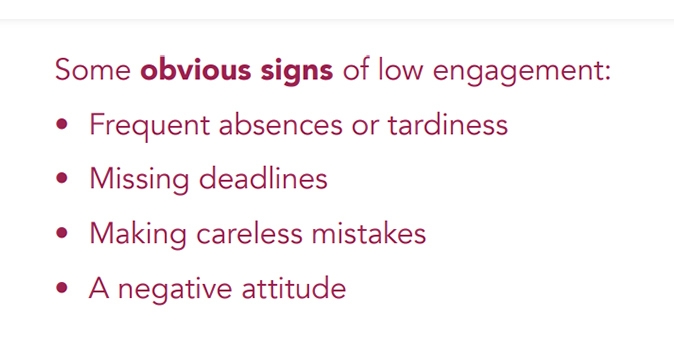
7. Quality of work
The "quality of work" engagement metric evaluates the level and effectiveness of employees' work output. It includes a variety of measures that assess how well and accurately tasks are completed by an individual or a team.
Key components of this metric involve:
- Error rate: this measures how often mistakes occur in the work process, showcasing employees' accuracy and attention to their tasks.
- Accuracy: This directly evaluates the correctness of the work produced, highlighting the thoroughness and diligence of employees in their assignments.
- Defect rate: particularly in manufacturing or production settings, this metric looks at the amount of flawed products, shedding light on the craftsmanship quality and process efficiency.
- Compliance: This checks how closely employees stick to internal standards, laws, and industry norms, demonstrating their commitment to following established quality and protocol standards.
Quality metrics play a crucial role in measuring employee engagement and performance because top-notch work typically stems from highly engaged and committed employees. Such employees tend to be careful, take pride in their accomplishments, and aim for high standards, leading to superior work quality.
These metrics form a comprehensive suite of performance indicators that organizations leverage to assess employee engagement, along with quantity metrics (like output volume and sales figures), efficiency metrics (comparing work output with input), and organizational performance metrics (such as return on human capital).
In essence, the "quality of work" engagement metric is a critical measure of employee performance, focusing on the superiority, precision, and standard compliance of their work. It offers insights into employee engagement, reflecting their commitment, skillfulness, and meticulousness in their roles.
8. Innovation and creativity rates
Innovation and creativity rates measure your team's ability to generate new ideas and solutions. These can be tracked through the number of new patents filed, the volume of innovative projects undertaken, or feedback on creative initiatives. Fostering an environment where creativity thrives can position you at the forefront of your industry.
9. Training and development opportunities
Offering training and development opportunities rank high in encouraging performance. According to the SHRM 2018 Employee Benefits Report:
The majority of employees (86%) indicate that professional and career development benefits are important to overall job satisfaction, making investments in these types of benefits pertinent to a strong benefits strategy.
Regular upskilling and reskilling to meet dynamic business needs can be monitored through participation rates or the number of completed training sessions. Your commitment to learning fosters a culture of continuous improvement and can influence productivity positively.
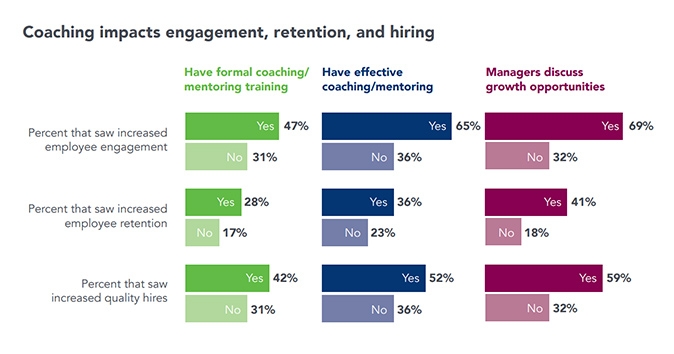
10. Work-life balance
Work-life balance metrics, such as absenteeism rates and employee self-reports on work-life satisfaction, provide a window into how effectively your team members are balancing their personal and professional time.
An equilibrium here is often indicative of sustained productivity and reduced burnout. Maintaining a supportive approach to work-life balance can yield substantial dividends in team morale and output.
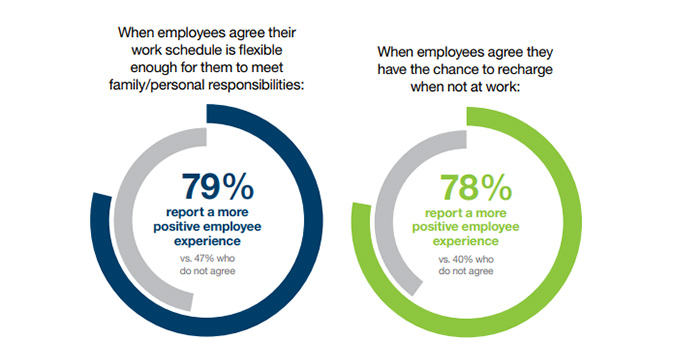
Methods for measuring employee engagement
Evaluating employee engagement is critical for understanding your workforce's motivation, satisfaction, and commitment. These methods provide concrete data to help guide your engagement ideas.
Surveys and questionnaires
Surveys and questionnaires are foundational tools for assessing engagement levels across your organization. They help you gather qualitative and quantitative feedback on specific aspects of the work environment.
You might measure responses on a scale or through open-ended questions to gauge employees' feelings about their roles, leadership, and the company culture. Regular use of pulse surveys can provide ongoing insights into engagement trends.
One-on-one interviews
One-on-one interviews offer a more personal approach to understanding individual employee experiences. During these interviews, you listen to employee concerns, ideas, and feedback in depth. This method allows for immediate clarification and the opportunity to explore topics that may not emerge in surveys.
Through this technique, you can uncover unique insights into employee morale and identify areas for improvement.
For example, our Conversations platform facilitates deeper engagement by allowing you to listen to employee concerns, ideas, and feedback in depth. With Conversations, immediate clarification is streamlined through real-time messaging and manager/employee feedback loops, providing the opportunity to explore topics that may not emerge in surveys.
This method not only uncovers unique insights into employee morale but also integrates these findings into actionable plans for improvement.
Focus groups
Focus groups involve gathering small groups of employees for structured discussions. They're useful for exploring complex issues and generating detailed employee feedback. With skilled facilitation, you can delve into the nuances of workplace dynamics and employee sentiment that might not be captured through other methods.
The benefits of using focus groups include:
- Diverse perspectives: focus groups provide a platform for a cross-section of employees to share their reactions and stories about certain behaviors within the workplace. This diversity of perspectives allows for a comprehensive understanding of the current company culture and provides insights into potential areas for improvement.
- Pattern identification: by gathering data from focus groups, patterns and trends can be identified, giving an assortment of the current company culture situation as well as methods to improve it. This allows for a balanced overview and an accurate measurement of employee satisfaction, engagement, and morale.
- Holistic understanding: focus groups offer a holistic review of organizational performance by providing a balanced overview of the company culture and accurately measuring employee satisfaction, engagement, and morale. This comprehensive understanding is essential for identifying areas of strength and opportunities for improvement within the organization.
- Employee involvement: focus groups encourage employee involvement and engagement in the assessment of company culture. By providing a platform for employees to share their experiences and perspectives, focus groups empower employees to contribute to the discussion and potential solutions for enhancing the company culture.
- Identifying improvement areas: focus groups help in identifying areas for improvement in the current assessment cycle and planning for future assessments. This allows organizations to address specific issues and make targeted improvements to enhance the overall company culture.
Overall, focus groups offer a valuable method for assessing company culture, gathering diverse perspectives, identifying patterns, and involving employees in the process of understanding and improving the organizational culture.
Performance and productivity data
Analyzing performance and productivity data provides a quantitative look at how engagement impacts your bottom line. Metrics such as sales figures, customer service ratings, or revenue per employee can indicate the effectiveness of your workforce.
Cross-referencing this data with engagement survey results can reveal powerful correlations between engagement levels and business outcomes.
Strategies to improve employee engagement
Improving employee engagement is pivotal for organizational success. Effective strategies can lead to a more motivated workforce, higher productivity levels, and greater employee retention.
Setting clear goals and expectations
You should establish clear goals and expectations to ensure every team member knows what is required of them. Well-defined objectives not only provide direction but also help employees understand how their work contributes to the organization's success. Use tools like management by objectives to set and communicate these targets effectively.
Recognizing and rewarding employees
Consistently recognizing and rewarding your staff can significantly boost engagement and overall performance. Public acknowledgment of a job well done or implementing a system for peer-to-peer recognition can be potent motivators.
Consider both monetary and non-monetary forms of recognition, such as bonuses or extra vacation days, and personal acknowledgments, like thank-you notes.
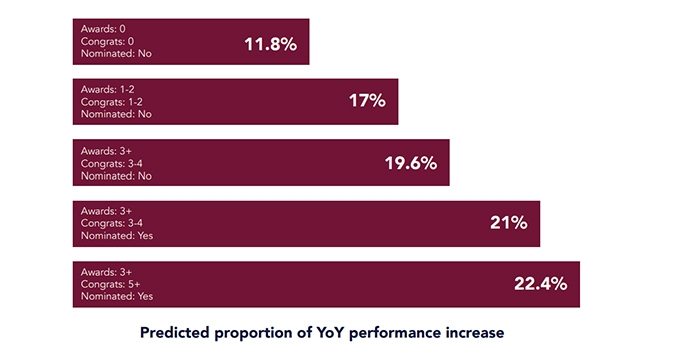
Fostering a positive work culture
Developing a positive work culture is essential for engagement. This includes promoting open communication, ensuring work-life balance, and creating a respectful environment where diversity is valued. Encourage collaboration and social interactions among employees to nurture a sense of community and belonging at work.
By focusing on these strategies, you can create an engaging workplace where employees are dedicated and invested in their roles.
Learn how the Workhuman Platform can transform employee engagement in your organization.
Challenges in measuring and improving engagement
Successfully gauging and enhancing employee engagement involves navigating several obstacles. This section sheds light on key impediments ranging from data handling to the intricacies of interpretation.
Data collection and privacy concerns
When you endeavor to measure employee engagement, collecting data in a manner that respects privacy is crucial. Surveys and feedback systems must be designed to ensure anonymity and confidentiality to foster trust and encourage honest responses.
For instance, you might use engagement surveys that anonymize participant identity to prevent potential repercussions for their candidness.
Interpreting engagement data correctly
After collecting data, the challenge becomes interpreting the responses accurately. It's important to recognize patterns and correlations in the data that could be indicative of broader engagement trends. However, misinterpretation can lead to misguided strategies.
For example, high participation in a company event doesn't necessarily equate to overall employee satisfaction. You would need to look deeper into the engagement metrics, such as Employee Net Promoter Scores or ongoing feedback trends, to gauge true engagement levels.
FAQs
How can a company effectively measure its employee engagement?
To effectively measure employee engagement, your company can conduct employee engagement surveys, which are carefully designed tools that gather comprehensive feedback from employees about their level of engagement and satisfaction within the organization.
What tools and methods are best suited for assessing employee engagement levels?
The best tools for assessing employee engagement often include customized surveys, one-on-one interviews, and focus groups. Additionally, analytics platforms are becoming increasingly popular for measuring various metrics like net promoter scores and turnover rates which convey engagement levels.
What key factors or drivers should be considered when evaluating employee engagement?
When evaluating employee engagement, consider key factors such as alignment with company values, relationship with management, peer collaboration, and recognition. Understanding the influence of these factors can reveal areas that may need improvement or highlight strengths in the engagement strategy.
Can you detail some effective activities that boost employee engagement in the workplace?
Effective activities known to boost employee engagement include team-building exercises, professional development opportunities, acknowledging individual and team successes, and transparent two-way communication within the organization.
What are the 5 C's of employee engagement and how do they impact the workplace?
The 5 C's of employee engagement comprise Career Development, Clarity of Expectations, Conveyance of Value, Connection to Colleagues, and Contributions to the Company. These elements help nurture a supportive environment that can lead to increased employee satisfaction and productivity.
What is an employee engagement scorecard, and how is it utilized by organizations?
An employee engagement scorecard is a tool used by organizations to track and analyze engagement metrics over time. This scorecard allows leaders to identify trends, make informed decisions, and develop targeted strategies to enhance engagement levels across the company.
Conclusion
As you dive into the concept of employee engagement metrics, it's crucial to grasp how pivotal they are for your organization's health.
This journey through various metrics, from how satisfied employees are to their creativity levels, reveals the complex nature of keeping a team engaged. By accurately measuring these aspects and implementing targeted strategies, you can transform your workplace into an environment where everyone feels valued and motivated.
Navigating the challenges of data privacy and interpretation requires careful thought. Ultimately, prioritizing employee engagement not only boosts productivity but also fosters a sense of community and purpose, laying the groundwork for your organization's long-term success.
About the author
Ryan Stoltz
Ryan is a search marketing manager and content strategist at Workhuman where he writes on the next evolution of the workplace. Outside of the workplace, he's a diehard 49ers fan, comedy junkie, and has trouble avoiding sweets on a nightly basis.